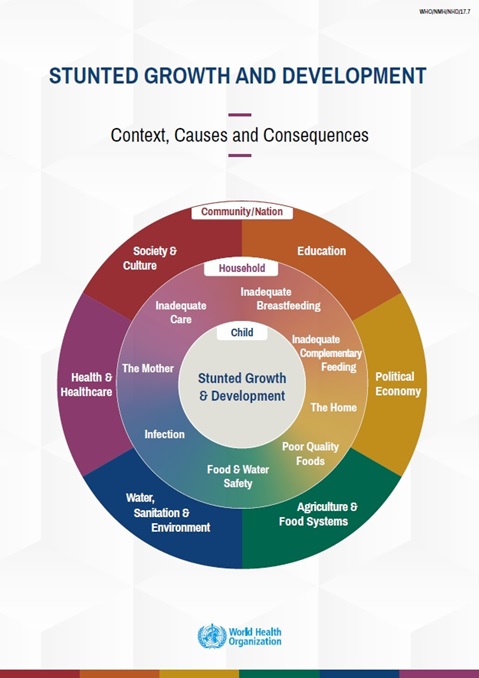Childhood Stunting: Context, Causes and Consequences
Conceptual framework

Overview
Children are stunted due to the combined effects of poor nutrition, repeated infection and inadequate psychosocial stimulation. The complementary feeding period, generally corresponding to age 6–24 months, represents an important period of sensitivity to stunting with lifelong, possibly irrevocable consequences. Interventions to improve complementary feeding practices or the nutritional quality of complementary foods must take into consideration the contextual as well as proximal determinants of stunting. This conceptual framework highlights the role of complementary feeding within the layers of contextual and causal factors that lead to stunted growth and development and the resulting short- and long-term consequences. Contextual factors are organized into the following groups: political economy; health and health care systems; education; society and culture; agriculture and food systems; and water, sanitation and environment. Programme and policy interventions aimed at preventing stunting should be informed by careful assessment of these factors at all levels.
